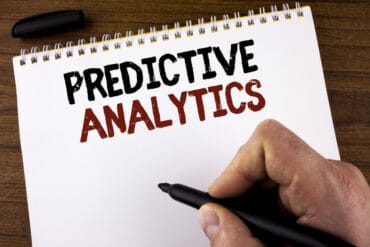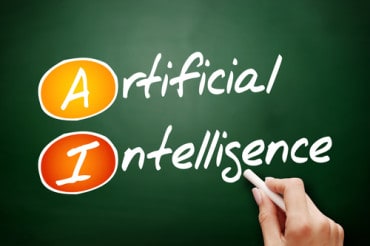
Interactive true 3D visualizations are the next standard in data analytics. Here’s why they outperform 2D and static 3D visualizations in AI projects.
Companies now have the ability to take all their data into account to make better business decisions. There can be great power in leveraging all that information, which can include everything from CRM records to customer sentiment from social channels, shipping modalities, customer service chatbot responses, handwritten maintenance log notes, IoT sensor signals, and more.
But the ability to bring all this data together for analysis is only the beginning. Without robust visualizations, it’s impossible for any human being to see what’s really going on. Analysts and data scientists that try to portray complex data relationships in traditional business intelligence tool formats can actually lead organizations down the wrong path.
Fully interactive multidimensional visualizations are the next standard in advanced data analytics. They are game-changers for both front-end exploration of data and revealing AI algorithms testing results. Here’s why they provide more insights than 2D and “static” 3D visualizations.
Standard 2D plots may hide crucial information
The sweet spot for finding competitive advantages in your data is identifying the relationships between data points. Say a financial services company wants to discover how to drive more home loans at a time of volatile interest rates. This could involve literally millions of data signals:
- Historical records of customer demographics and geography.
- Web searches on terms like “best home loans.”
- Interest rate forecasts.
- Marketing insights, everything from email click-throughs to banner ad engagement to remarketing to checking account customers.
- Seasonal factors.
- Spreadsheets of home inventory data by micro market.
- Social media platform choices and engagement.
- Whatever other key data sources you choose, in all sorts of formats.
Here’s what it might look like to try to analyze this data in 2D. First, the user has to decide what query to ask to get answers. One query leads to another because the areas of greatest potential aren’t surfaced. This becomes a frustrating rabbit hole involving the comparison of myriad pie charts, histograms, and scatter plots. It’s difficult to know what’s most important, and crucial structures and relationships can be hidden from view.
AI-generated true 3D visualizations make the relationships between all these data points understandable and visible all at once. Instead of traditional 2D scatter plots on two axes, or forced-perspective 3D, it’s possible to look at far more factors in one graphic. This leads to clearer insights. And when something noteworthy that the business needs rises to the surface, true 3D illustrates the connections concisely. An enormous quantity of relevant data is organized and depicted in ways that humans can grasp.
See also: The Art of Intuitive Data Visualization
Static 3D visualizations don’t always reveal everything that is happening
Not all 3D visualizations are true 3D. Even today, 3D visualizations are still relegated to tools that offer forced-perspective 3D visualizations that can actually make it harder to spot insight. In contrast, true 3D visualizations can be manipulated like an object in space, enabling the observer to rotate it, pull it closer, or zero in on a particular point. That’s why 3D visualization tools need to be built as 3D native from the get-go. For example, using a game engine in the backend makes it possible to provide true, realistic 3D with correct lighting, animation, and perspective.
The visual experience is built to be a multi-user experience. Anyone, not just data scientists, can easily see and ask why one data point is represented as bigger and more important than another or why the distance between data points is short.
In our example, a loan officer could collaborate with a data analyst and marketer to explore why similar personas in different zip codes are underperforming. The true 3D visualization allows more information to be presented more simply and intuitively, allowing the team to take a deep dive into the relationships that exist, like responses to specific ad messaging and income level.
Data storytelling in true 3D
Data scientists working with complex data are experts at using AI algorithms to find the insight they need. Where they can falter is communicating what they’ve found to business leaders and subject matter experts, the people who are essential partners in deciding the direction of AI projects. Business leaders need visualization in order to absorb findings, understand the impact an algorithm may have, and take action.
True 3D helps to illustrate the drivers behind an AI algorithm or showcase how an AI model will behave once it’s deployed. On an AI-driven platform, it’s possible to explore data to surface drivers, communities, trends, etc., and then apply the appropriate true 3D visualization to highlight the insights. Relationships and relative importance of data may be shown by position (X, Y, Z axis or proximity in a network graph), color, size, shape, texture, glow, halos, opacity, and many other dimensions. These visualizations incorporate animation and even sonification (the use of sound to understand patterns in the data) to help tell the story of extremely complex data sets.
Nowadays, the analysis is almost never static. That’s why we talk about the data journey. Analysts need to be able to interact with data at each stage, using the appropriate interfaces, and across multiple devices. Each step of that journey is quite distinct and requires a different experience. For example, a data scientist will create an analysis on a powerful machine, but that analysis ultimately needs to be consumed by decision makers on the phone or presented to a broader audience in a collaborative VR meeting. Multi-experience analytics is the alignment of user interfaces, interaction modalities, and analytic capabilities in order to optimize the consumption across different devices.
Intelligent data exploration happens in true 3D
Traditional BI tools haven’t kept up with the evolution of data. The volume and range of data streams under analysis are exponentially greater than what static dashboards and 2D visualizations can realistically explore.
Growing research shows that 3D visualizations outperform 2D interfaces, accounting for the limitations of humans’ working memory and data complexity. When powered by AI, multidimensional visualizations can explain the output of machine learning models and main drivers in an intuitive way. They reveal complex relationships that live at the intersection of many dimensions, showing logical communities within datasets. And this ability to see complex relationships in data makes it easier to perceive what’s really going on.




























